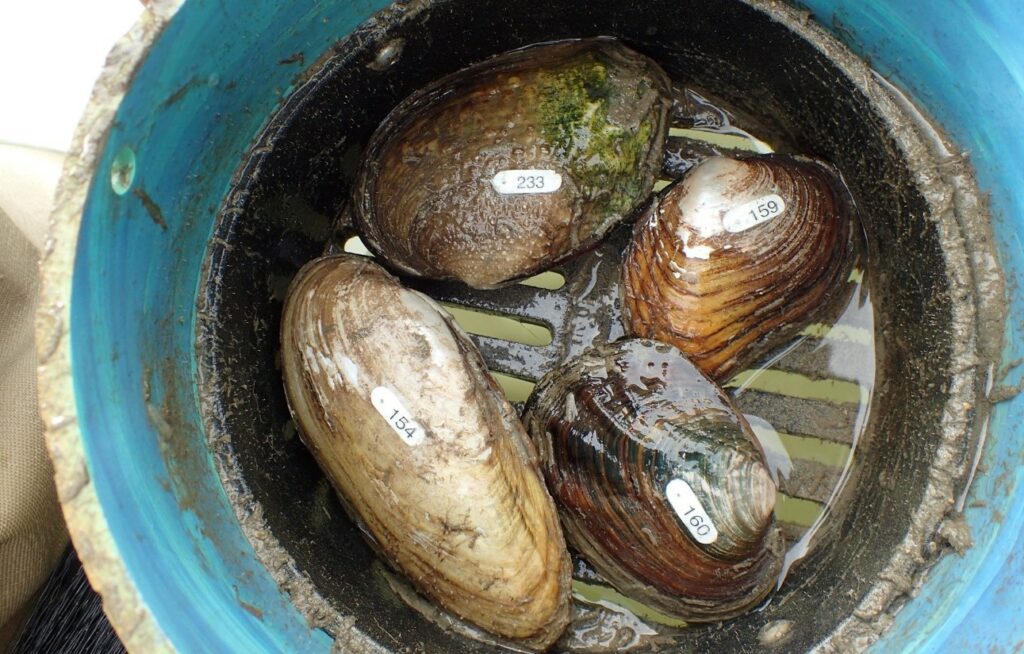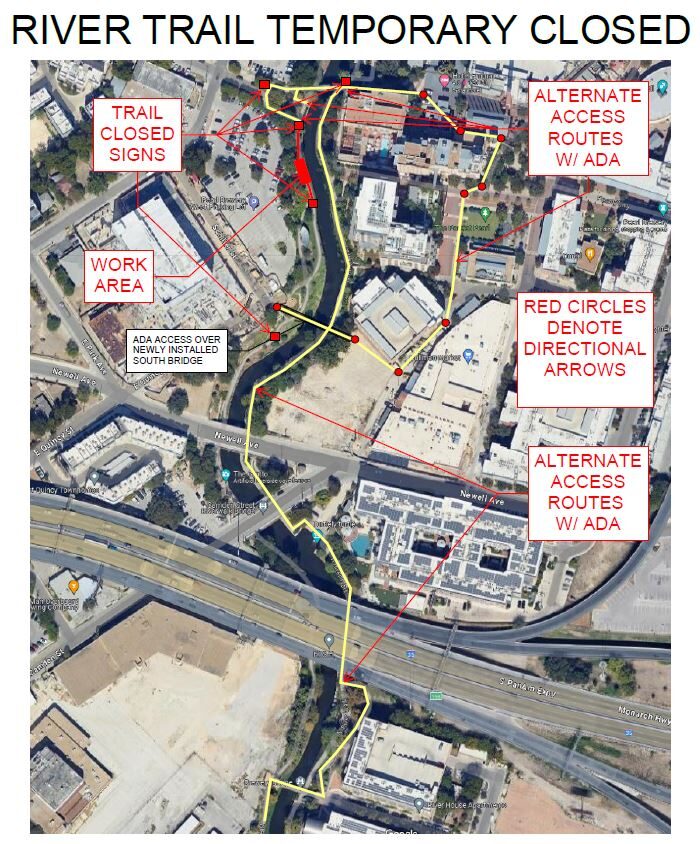Last Updated on March 31, 2023
As part of the San Antonio River Authority’s (River Authority) mission of being committed to safe, clean, enjoyable creeks and rivers, staff regularly conducts water quality monitoring and performs biological and habitat assessments throughout the San Antonio River Basin to keep tabs on the condition of this important ecoregion. A healthy river habitat will support thriving native species, and our staff conducts several studies to keep tabs on the number of species that are currently present throughout the river basin.
The Mission Reach Mussel Survivability Study set out to determine the feasibility of a future mussel reintroduction effort in this improved habitat. Read along to learn more about this study and our current efforts to help this species thrive once again in our basin!
Background
The Mission Reach Ecosystem Restoration and Recreation Project is part of the San Antonio River Improvements Project, a $384.1 million investment by Bexar County, the City of San Antonio, San Antonio River Authority, the U.S. Army Corps of Engineers (USACE), and the San Antonio River Foundation in flood control, amenities, ecosystem restoration, and recreational improvements along 13 miles of the San Antonio River from Hildebrand Avenue south to Loop 410 South. The project, which was completed in 2013, has increased the quality, quantity, and diversity of plants and animals (flora and fauna) along nine miles of the San Antonio River.
Humans have relied on the resources of the San Antonio River for thousands of years. The Upper San Antonio River was once home to a diverse freshwater mussel community before urbanization caused a drastic degradation of the ecosystem; however, populations of native mussels that have survived the elements can be found in areas spared of construction activity during years of infrastructure projects.
Study Findings
Figure 1. Map showing the two Mission Reach sites and their proximity to downtown San Antonio.
The Mission Reach Mussel Survivability Study consists of two experimental sites in the Mission Reach of the San Antonio River and one control site in Goliad County in the Lower San Antonio River where mussel populations are healthy. The study concluded in October 2020 and the results are promising for the prospect of reintroducing mussels.
|
Site |
% Survival |
|
Control |
50 |
|
MR1 |
75 |
|
MR2 |
81 |
Table 1. Percent survival at the three study sites.
After two years, the survival of the mussels was about 78% in the Mission Reach, which was higher than at the control site. Additionally, the mussels at one Mission Reach site grew considerably better than the other two sites; however, the other sites also grew quite well. These results indicate that not only can these native mussels survive in the restored urban areas of the San Antonio River, but river conditions are such that they can continue to grow well compared to the natural conditions of the Lower San Antonio River.

Figure 2. Average percent weight increase of mussels at each of the three study sites.
Additional experimentation is necessary before a final decision can be made, but the early results of the study has been encouraging for River Authority biologists who see it as one more piece of evidence that this recently restored stretch of urban river could once again sustain such an important group of organisms.





